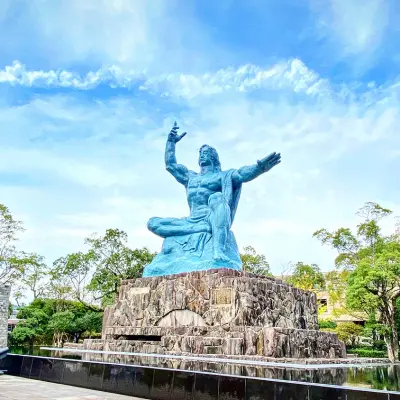
Historic Sites and Seaside Adventures
Explore the fascinating history of Kyushu from the ancient volcanoes that formed the land to samurai battles and the area's Christian history, and the events of 20th century. As you travel from Kumamoto to Nagasaki you can feel the history of this dynamic region come alive.
Day 1
Kumamoto is famous for legendary samurai Miyamoto Musashi, delicious food and Mt. Aso volcano. The attractive city is centered around Kumamoto Castle. Although the castle was badly damaged by an earthquake in 2016, its restoration has become a symbol of Kumamoto's recovery. Select parts of the castle complex are now open again. Next to the castle, the Sakura no Baba Josaien is a fun shopping area with a traditional atmosphere. You can often see strolling samurai in full regalia, who are happy to pose for photos.



Day 2
Head inland to Mt. Aso, about an hour's drive from the city. Japan's largest active volcano is a symbol of the powerful forces of nature. There are also direct bus services from Kumamoto Station to Aso Station. Head up to Daikanbo Peak, an observation point with a restaurant and views over the five peaks of Mt. Aso. To get closer to the volcano, take the Mt. Aso Ropeway to the Mt. Naka crater, and its steaming turquoise pond.



To experience the quieter side of Kyushu's natural beauty, visit Kamishikimi Kumanoimasu Shrine, deep in the forests around Takamori, about 30 minutes drive from Aso Station. This picturesque shrine and its mossy, lantern-lined approach have been immortalised in comics and animation. Don't miss the legendary stone with a giant crack, said to have been created when a devil escaped the mountain, thousands of years ago.



Day 3
Head to the coast to explore more recent history on the beautiful Amakusa islands. The area played an important part in the history of Christianity in Kyushu in the seventeenth century. The three main islands are connected to the mainland by bridges. There are several churches and a museum of Christian history on Shimoshima, the largest island. From here, you can travel by car ferry from Oniike port to Kuchinotsu port on Nagasaki's mainland.



Day 4
Another important area for the history of Christianity in Kyushu, is Shimabara. High taxes imposed by the local ruler and persecution of Christians in the area lead to the Shimabara Rebellion in 1637. The extravagant castle and surrounding samurai residences are worth a half day's exploration. You can stroll well-preserved streets with narrow canals.



From Shimabara, it's a short drive to reach Unzen, Nagasaki's famous hot spring area. Around Unzen Hell, a series of bubbling, sulfurous pools, some of the leaders of the Shimabara Rebellion were martyred. Despite its dramatic history, the resort town became popular with Nagasaki's expats in the Meiji era (1868-1912). There are many several luxurious historical and modern hot spring hotels here, some with views of Mt. Unzen from outdoor baths. About an hour's drive will get you to Nagasaki's thriving city.



Day 5
The port city of Nagasaki was a trade gateway between Japan and Europe for centuries, but more recently, it was the target of an atomic bomb towards the end of WWII. The people of Nagasaki have rebuilt and moved forward, without forgetting that terrible time. Glover Garden is an area above the city where western traders lived after Japan was opened to trade. It is named after Thomas Glover (1838-1911), a Scottish merchant. There are several historic mansions here, with views over the port.



A visit to Nagasaki Atomic Bomb Museum is a somber, but highly recommended experience. Peace Park with its iconic Peace Statue is a five minute walk away from the museum. It's a short drive to the summit of Mt. Inasa, on the other side of the Urakami River. The Mt. Inasa Observatory is famous for its night views. The city has a convenient street car system that will get you to the main sightseeing spots.



Book your perfect stay in Kyushu with thousands of properties to choose from
 Kyushu by Rail
Kyushu by Rail Exploring the boundless world of Japan's meccas of spirituality
Exploring the boundless world of Japan's meccas of spirituality Historic Sites and Seaside Adventures
Historic Sites and Seaside Adventures Kyushu's Scenic Coast
Kyushu's Scenic Coast Natural Wonders and Hot Springs
Natural Wonders and Hot Springs A Taste of Kyushu
A Taste of Kyushu Exploring peace in Kyushu and environs: A most worthwhile journey
Exploring peace in Kyushu and environs: A most worthwhile journey Dive deep into Kyushu’s rich culture of onsen bathing and porcelain
Dive deep into Kyushu’s rich culture of onsen bathing and porcelain






